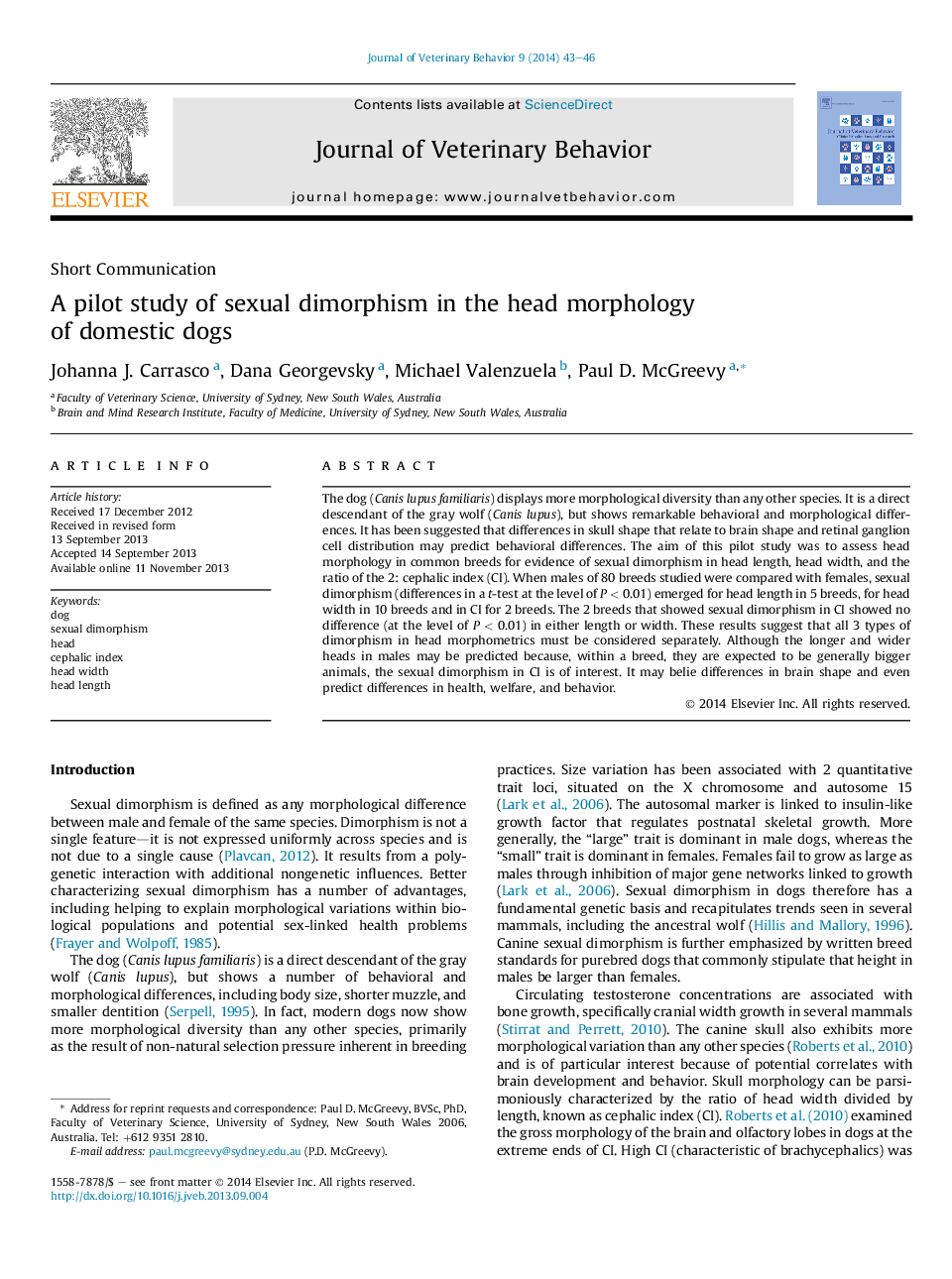| Article ID | Journal | Published Year | Pages | File Type |
|---|---|---|---|---|
| 2398811 | Journal of Veterinary Behavior: Clinical Applications and Research | 2014 | 4 Pages |
The dog (Canis lupus familiaris) displays more morphological diversity than any other species. It is a direct descendant of the gray wolf (Canis lupus), but shows remarkable behavioral and morphological differences. It has been suggested that differences in skull shape that relate to brain shape and retinal ganglion cell distribution may predict behavioral differences. The aim of this pilot study was to assess head morphology in common breeds for evidence of sexual dimorphism in head length, head width, and the ratio of the 2: cephalic index (CI). When males of 80 breeds studied were compared with females, sexual dimorphism (differences in a t-test at the level of P < 0.01) emerged for head length in 5 breeds, for head width in 10 breeds and in CI for 2 breeds. The 2 breeds that showed sexual dimorphism in CI showed no difference (at the level of P < 0.01) in either length or width. These results suggest that all 3 types of dimorphism in head morphometrics must be considered separately. Although the longer and wider heads in males may be predicted because, within a breed, they are expected to be generally bigger animals, the sexual dimorphism in CI is of interest. It may belie differences in brain shape and even predict differences in health, welfare, and behavior.
